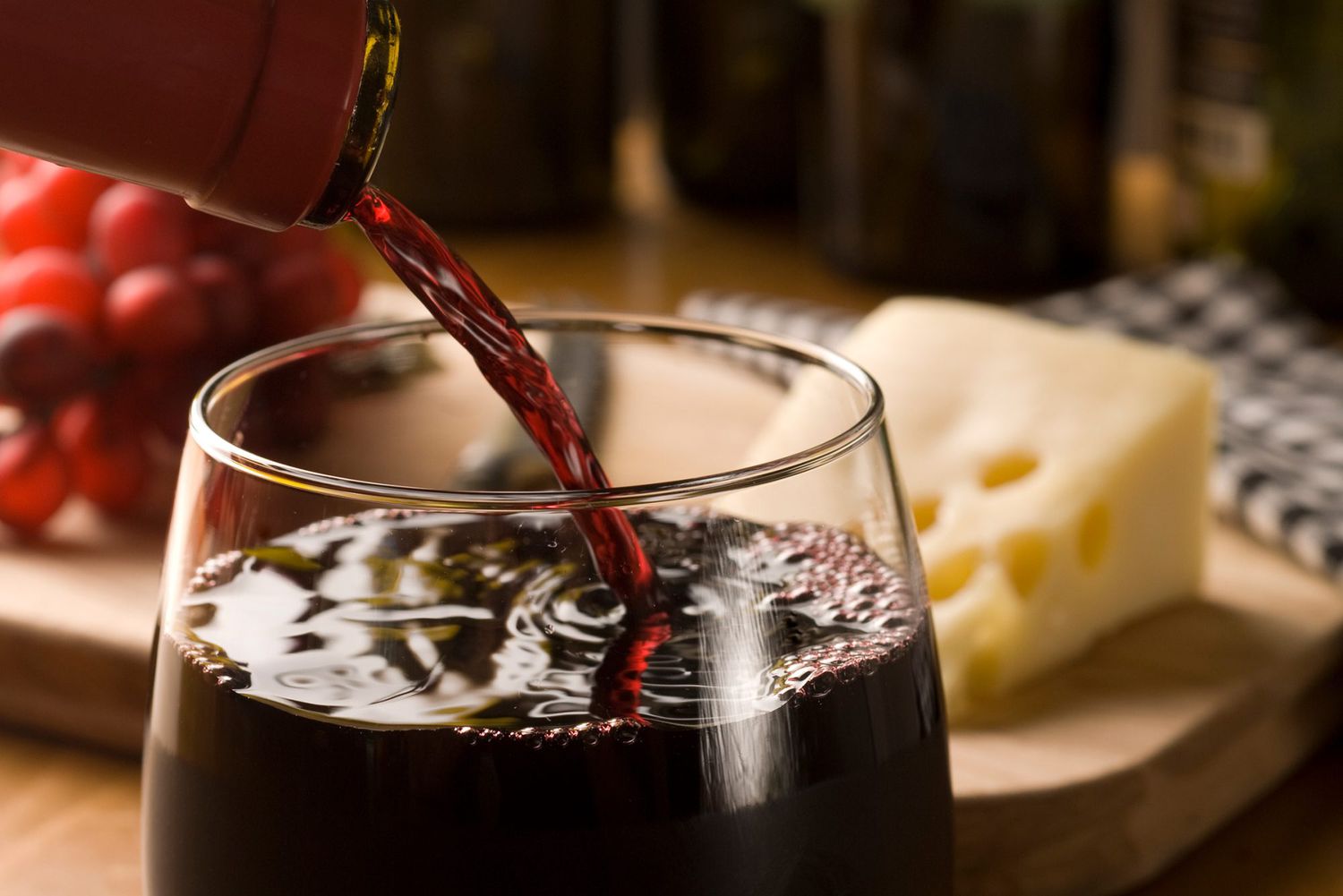Merlot stands as one of the most approachable and beloved red wines in the world, earning its reputation as the “smooth operator” of the grape kingdom. This versatile varietal has captured wine lovers’ hearts with its velvety texture, rich fruit flavors, and remarkable ability to express different characteristics depending on where it’s grown. Named after the French word “merle,” meaning blackbird, Merlot gets its moniker either from the dark-skinned grapes that resemble the bird’s plumage or from the blackbirds’ fondness for eating the ripe fruit straight from the vine.
As the world’s second-most-planted red grape variety, Merlot thrives in diverse climates and terrains, particularly in clay-rich soils. From its prestigious origins in Bordeaux’s Right Bank, where it creates some of the world’s most expensive wines in Pomerol and Saint-Émilion, to its successful cultivation in California, Chile, Italy, and beyond, Merlot has proven its adaptability and appeal. The grape’s early ripening nature and relatively easy cultivation make it a favorite among winemakers, while its soft tannins and fruit-forward profile make it an ideal entry point for those new to red wine.
What truly sets Merlot apart is its chameleon-like ability to range from light, fruity expressions in cooler climates to rich, full-bodied wines in warmer regions. This versatility, combined with its natural smoothness and food-friendly character, has made Merlot a staple in wine cellars worldwide, despite facing temporary setbacks like the infamous “Sideways effect” of the early 2000s.
The Rich History and Origins of Merlot

The story of Merlot begins in 18th-century France, with the earliest recorded mention dating back to 1784 when a Bordeaux official praised wine made from the grape as “one of the area’s best.” The grape’s name first appeared in print in 1824 in a blog about Médoc wine, establishing the connection between the variety and the local blackbirds that enjoyed feasting on the ripe grapes.
Originally considered a “secondary” grape best suited for blending rather than standalone wines, Merlot played a supporting role to the more prestigious Cabernet Sauvignon in Bordeaux blends. However, its popularity grew steadily, and plantings spread from the Right Bank to the Left Bank’s Médoc region by the 19th century.
The grape faced significant challenges in the mid-20th century when severe frost in 1956 and disease issues in the 1960s nearly decimated French Merlot vineyards. French authorities even banned new Merlot plantings between 1970 and 1975. Despite these setbacks, Merlot’s resilience and quality eventually led to its global expansion, with the variety reaching Italy by 1855, Switzerland in the early 1900s, and experiencing a major surge in popularity in the United States during the 1990s.
Understanding Merlot’s Distinctive Characteristics
Flavor Profile and Tasting Notes
Merlot’s flavor profile is beautifully complex yet accessible, making it appealing to both novice and experienced wine drinkers. The primary flavors include cherry, chocolate, plum, bay leaf, and vanilla. In cooler climates, Merlot expresses fresh red plum and cherry notes, while warmer regions produce wines with baked blackberry and fruitcake characteristics.
The wine’s aromatic profile ranges from red fruit and plum jam to more complex notes of graphite, herbs, and cedar when aged in oak. As Merlot ages, it develops chocolatey and meaty characteristics with potential tobacco aromas. Additional fruit notes commonly associated with the variety include cassis, black and red cherries, blackberry, blueberry, and mulberry.
Texture and Structure
What truly distinguishes Merlot is its signature smooth, velvety texture. This characteristic stems from the grape’s thinner skins and fewer seeds compared to Cabernet Sauvignon, resulting in less tannin extraction during winemaking. The tannin molecules in Merlot are smaller and differently shaped, creating a softer, less astringent wine experience.
Merlot typically presents as medium to full-bodied with moderate acidity and alcohol levels ranging from 12-15%. The wine’s tannins are generally described as soft and approachable, making Merlot enjoyable even in its youth, though quality examples can age gracefully for decades.
Major Merlot Wine Regions Around the World

Bordeaux, France: The Heartland
France remains the largest producer of Merlot with 268,067 acres planted, primarily in Bordeaux, where the grape comprises 60% of all plantings. The Right Bank appellations of Pomerol and Saint-Émilion represent the pinnacle of Merlot expression. Pomerol’s clay-rich soils near the Dordogne River create wines with deep black cherry and plum flavors, subtle truffle notes, and exceptional aging potential. Saint-Émilion’s limestone and clay soils contribute to structured, complex wines featuring blackcurrant, dark cherry, chocolate, and spice notes.
Italy: Diverse Regional Expressions
Italy cultivates 59,446 acres of Merlot, with the most notable regions being the Triveneto area and Tuscany. In Friuli-Venezia Giulia’s Colli Orientali del Friuli, producers create fresh, structured, and elegant wines. Tuscany’s clayey areas of Val di Cornia and Bolgheri produce some of Italy’s finest Merlot expressions, often used in prestigious Super Tuscan blends.
United States: New World Innovation
The United States, with 52,512 acres planted, has embraced Merlot enthusiastically. Washington State particularly excels with Merlot, where the variety helped establish the region’s reputation for quality red wines in the 1980s. Washington Merlots are noted for their deep color, balanced acidity, and unique combination of New World fruitiness with Old World structure. California’s Napa Valley and Sonoma County also produce exceptional examples.
Other Notable Regions
Chile produces more restrained, medium-bodied Merlots, while China has emerged as a significant producer with 41,267 acres planted. Australia’s Margaret River region creates Bordeaux-style blends, and Canada successfully cultivates Merlot in both Ontario and British Columbia.
How to Serve and Enjoy Merlot

Serving Temperature and Glassware
Merlot should be served slightly below room temperature, ideally between 60-68°F (15-20°C). This temperature range emphasizes the wine’s aromas without highlighting the alcohol content. Use a large, oversized wine glass to aid aeration and enhance the wine’s aromatic expression.
Decanting and Aging
Decanting Merlot for approximately 30 minutes before serving allows the wine to fully open up and reveal its complexity. Many Merlots age gracefully for 3-7 years, while exceptional examples can continue developing complexity for 15 years or more. The wine gains spicy, plummy notes and dark chocolate undertones with proper cellaring.
Food Pairing Recommendations
Merlot’s versatility makes it an excellent food wine. Its soft tannins and fruit-forward character complement rich stews, grilled meats, and aged cheeses. The wine pairs beautifully with lamb, beef, duck, and game meats. For cheese pairings, consider aged cheddar, gouda, or blue cheese varieties that can stand up to Merlot’s richness without overwhelming its delicate fruit flavors.
The Modern Merlot Renaissance
Despite facing challenges from the “Sideways effect” in 2004, when the film’s negative portrayal temporarily damaged Merlot’s reputation, the variety has experienced a remarkable renaissance. Today, wine enthusiasts and critics recognize Merlot not merely as a blending grape but as a splendid varietal capable of creating wines that are lush, complex, and wonderfully versatile.
Modern winemaking techniques and better understanding of terroir have elevated Merlot’s status, with producers focusing on reducing yields and optimizing harvest timing to create more concentrated, age-worthy wines. The variety’s natural approachability, combined with its potential for complexity, ensures Merlot’s continued popularity among wine lovers worldwide.
Whether you’re discovering red wine for the first time or seeking a sophisticated bottle for special occasions, Merlot offers something for every palate and preference, truly living up to its reputation as the smooth operator of the wine world.


